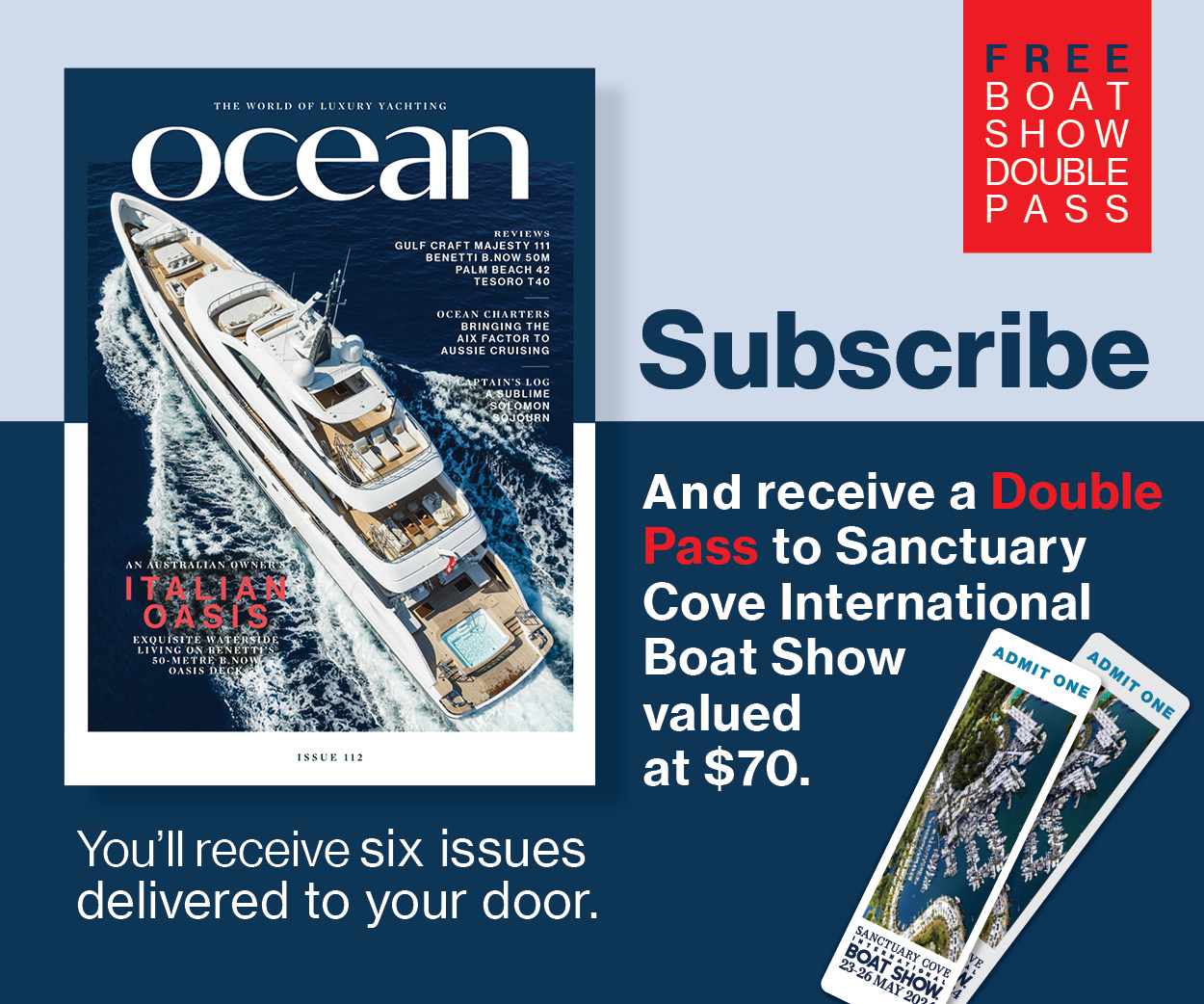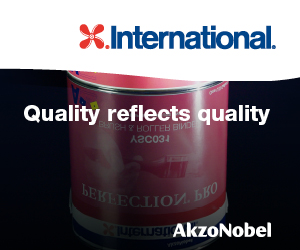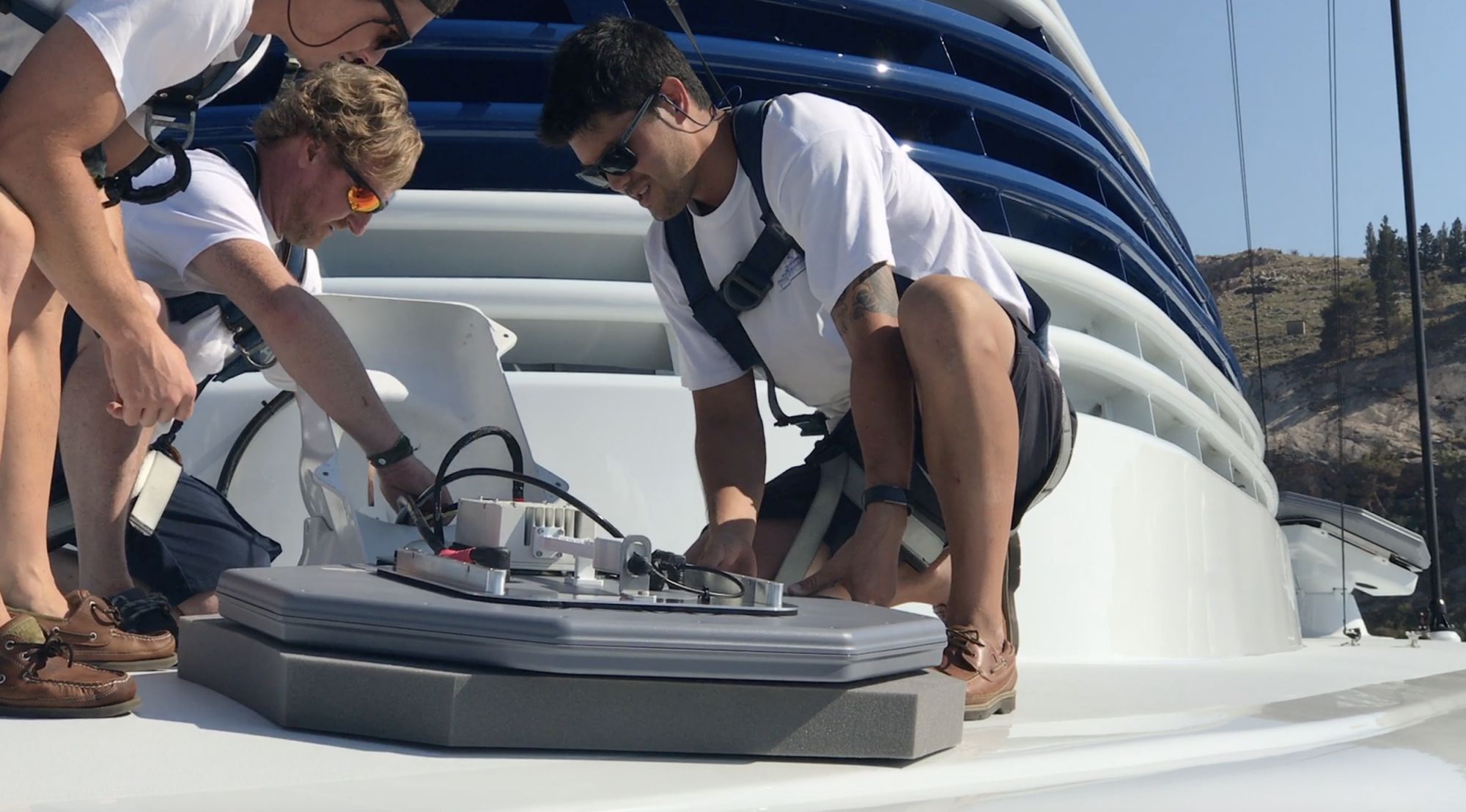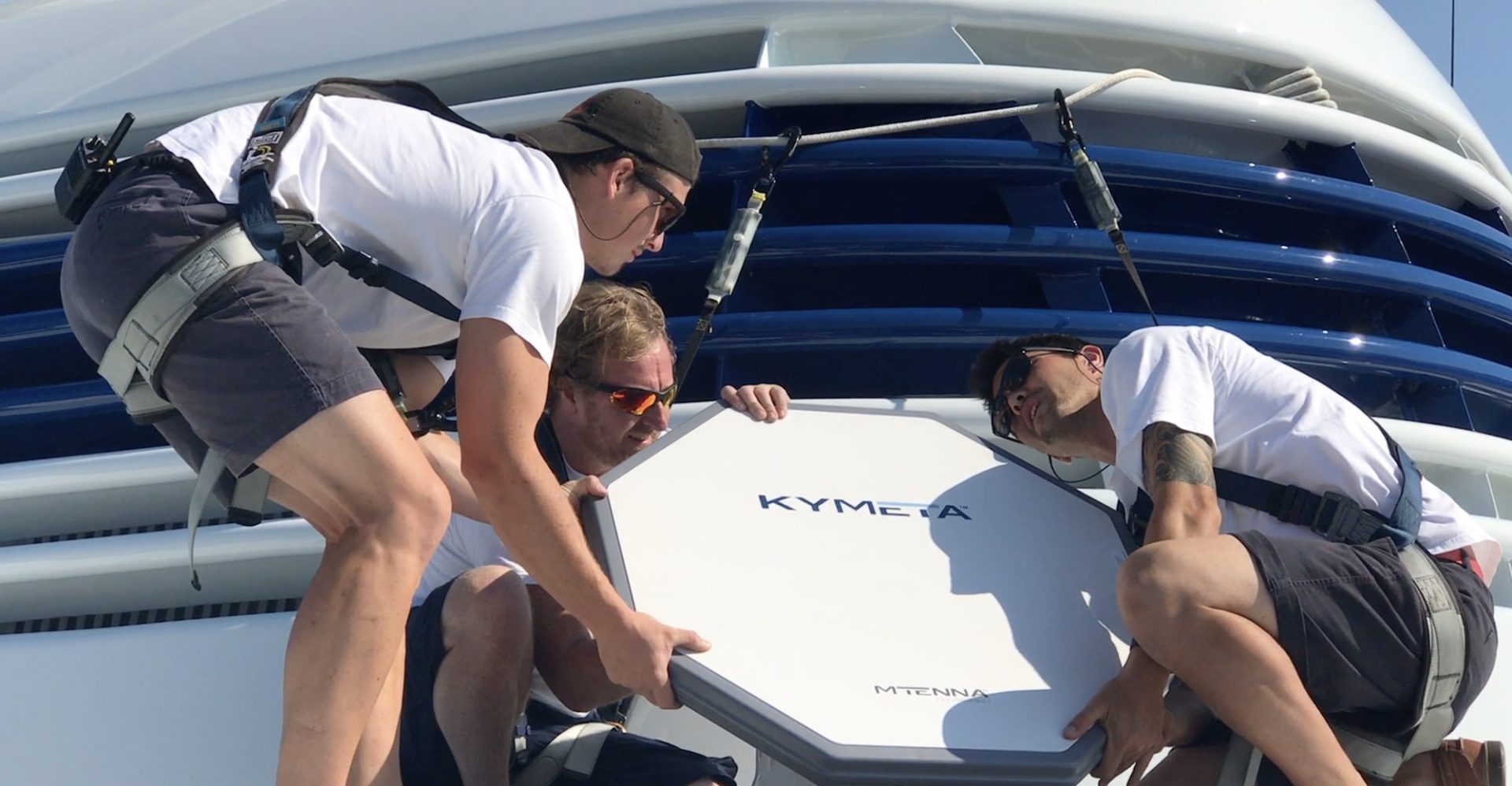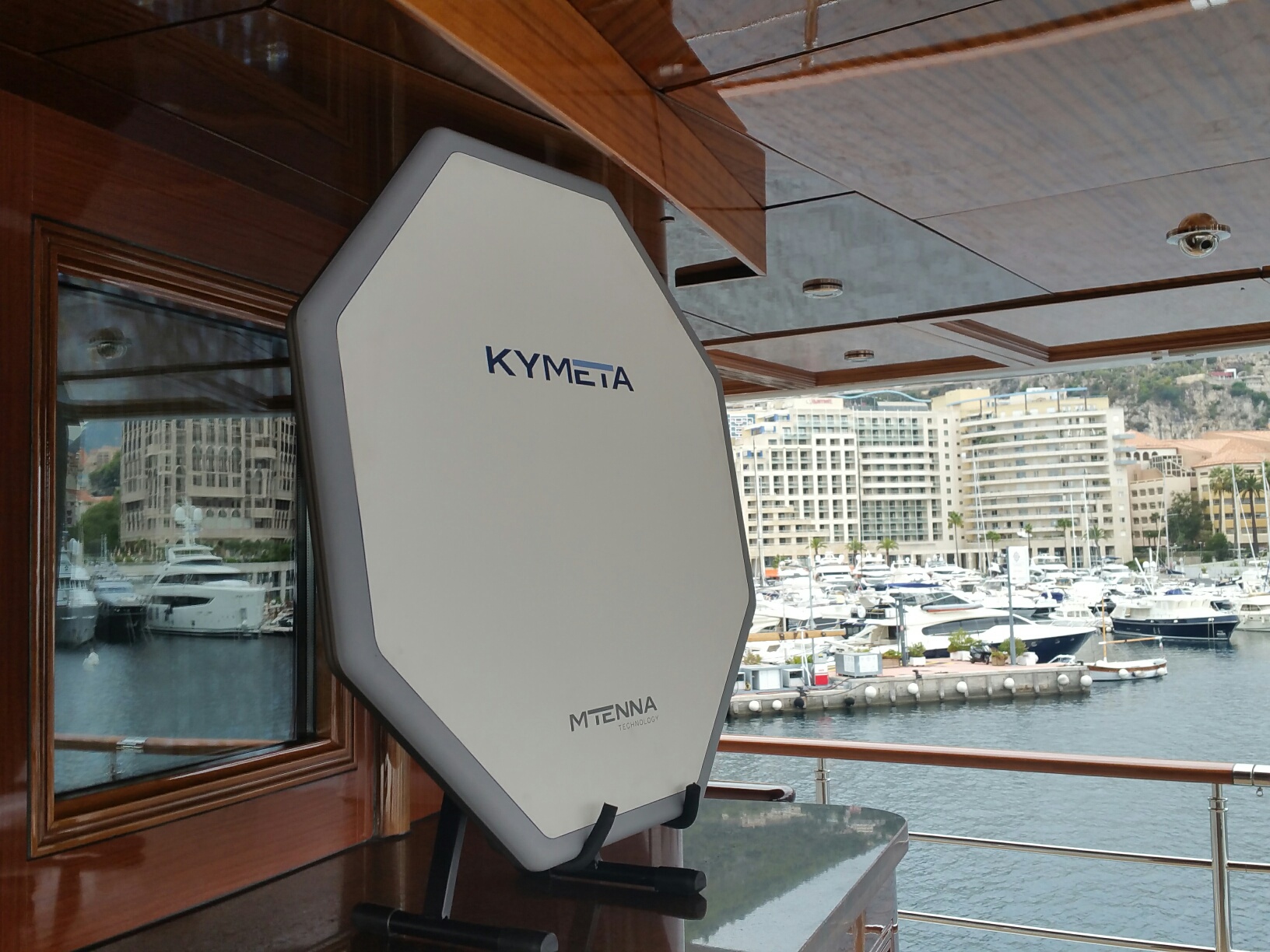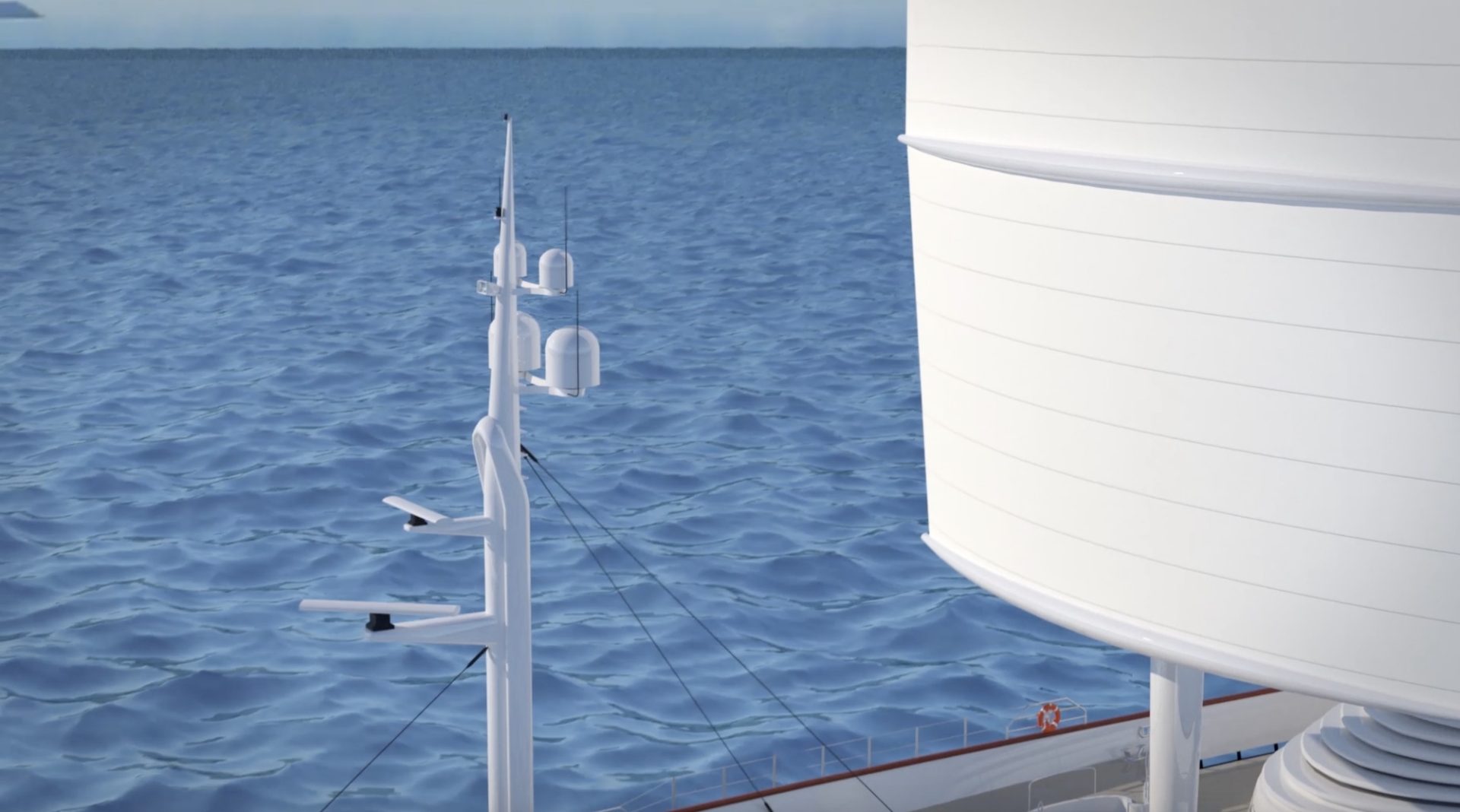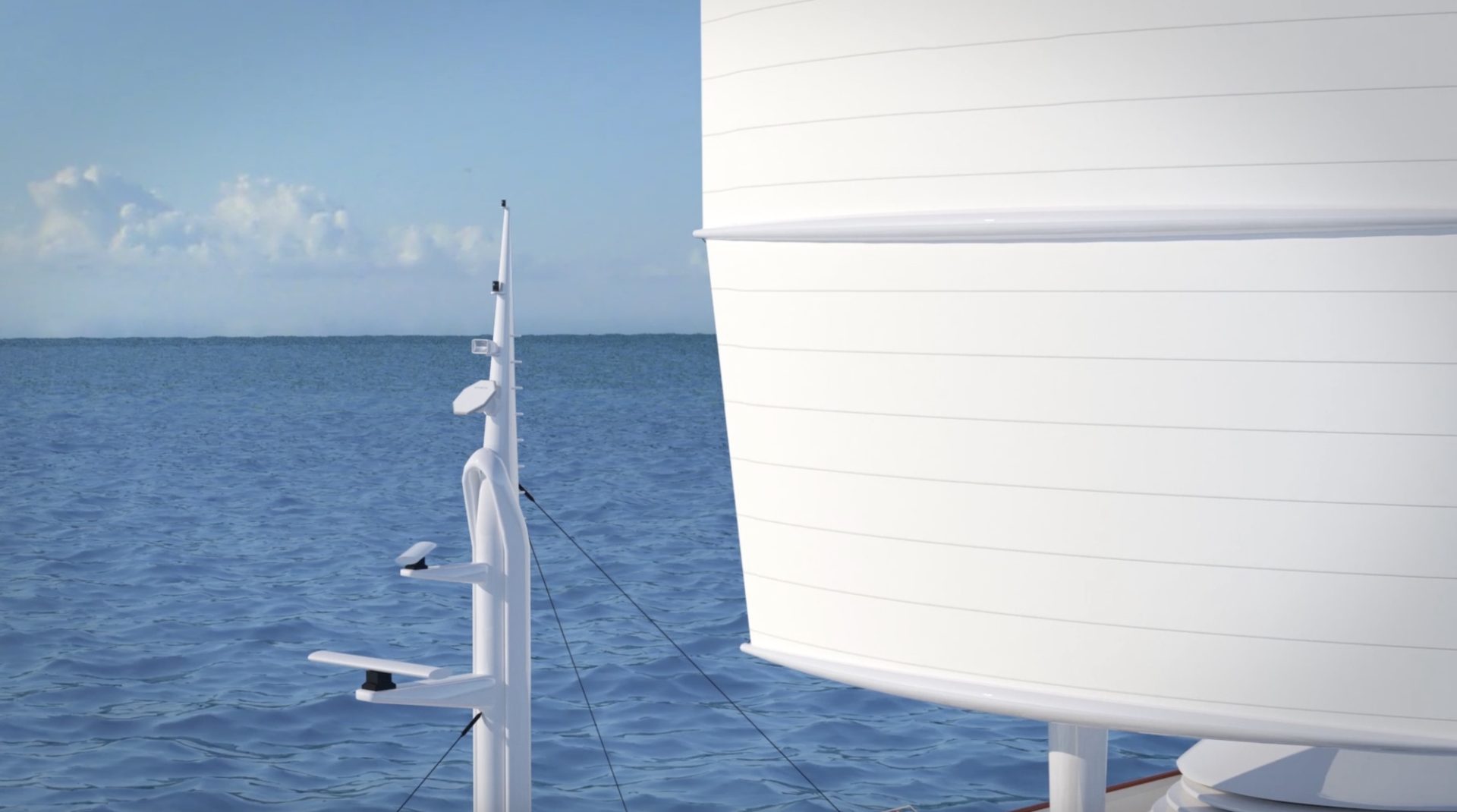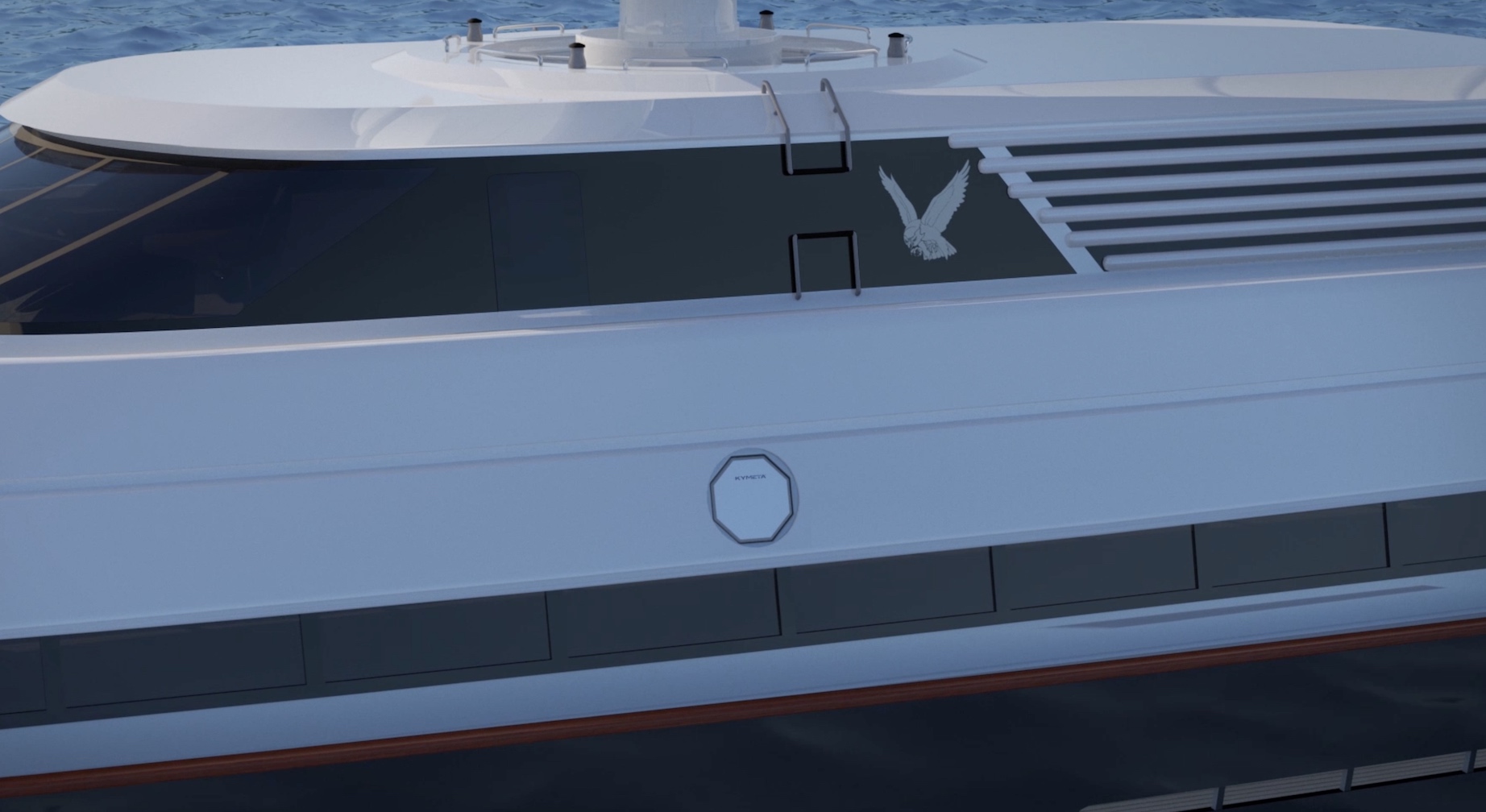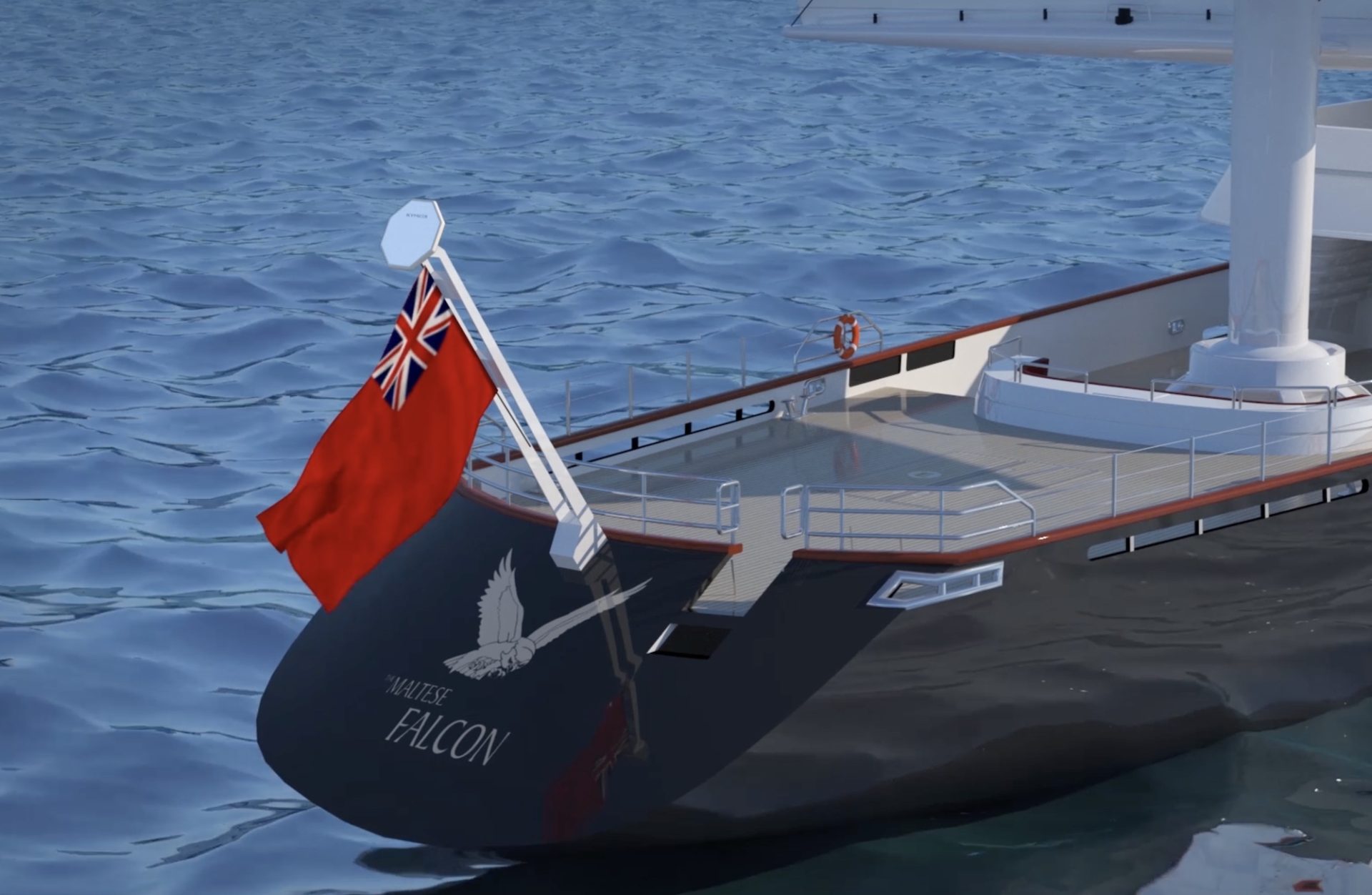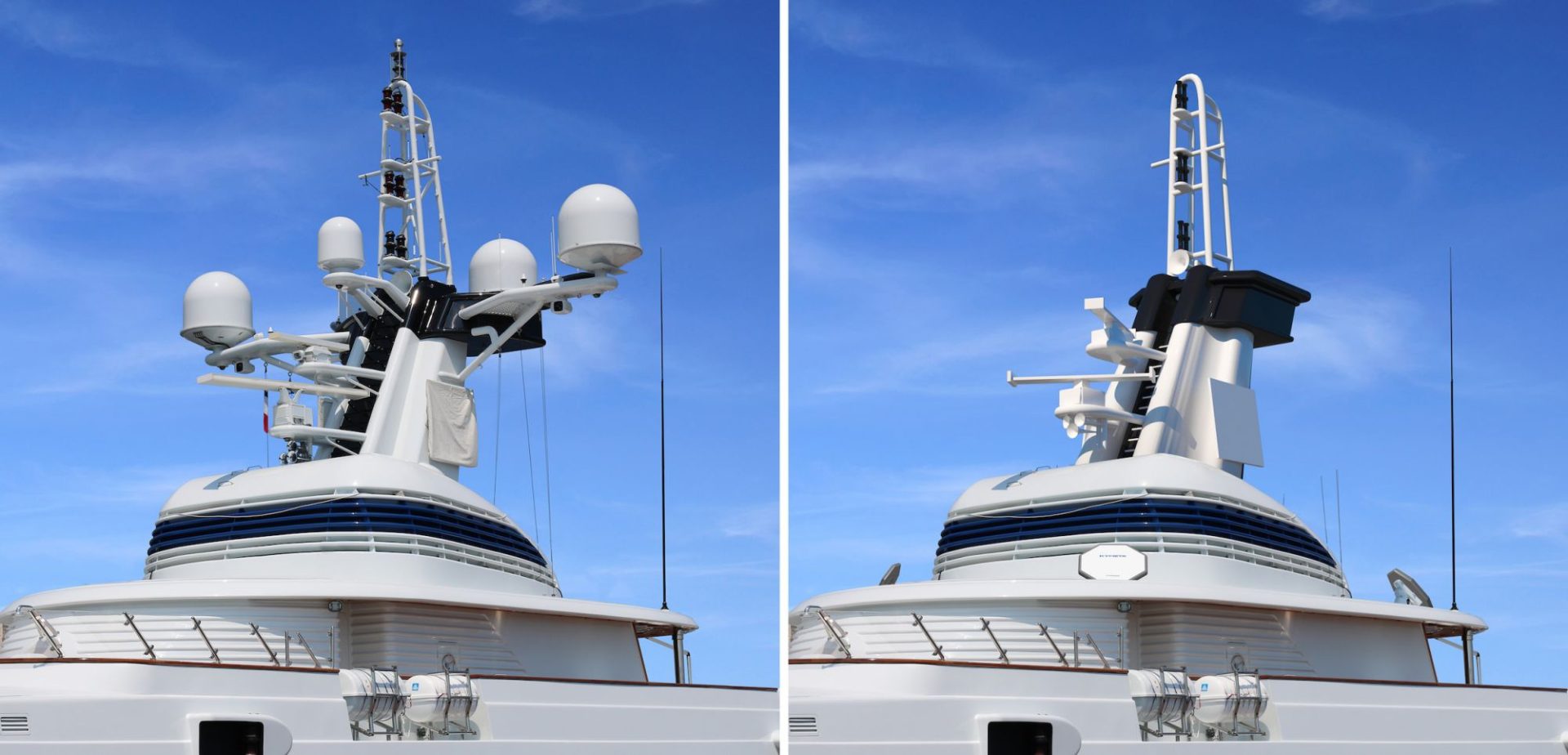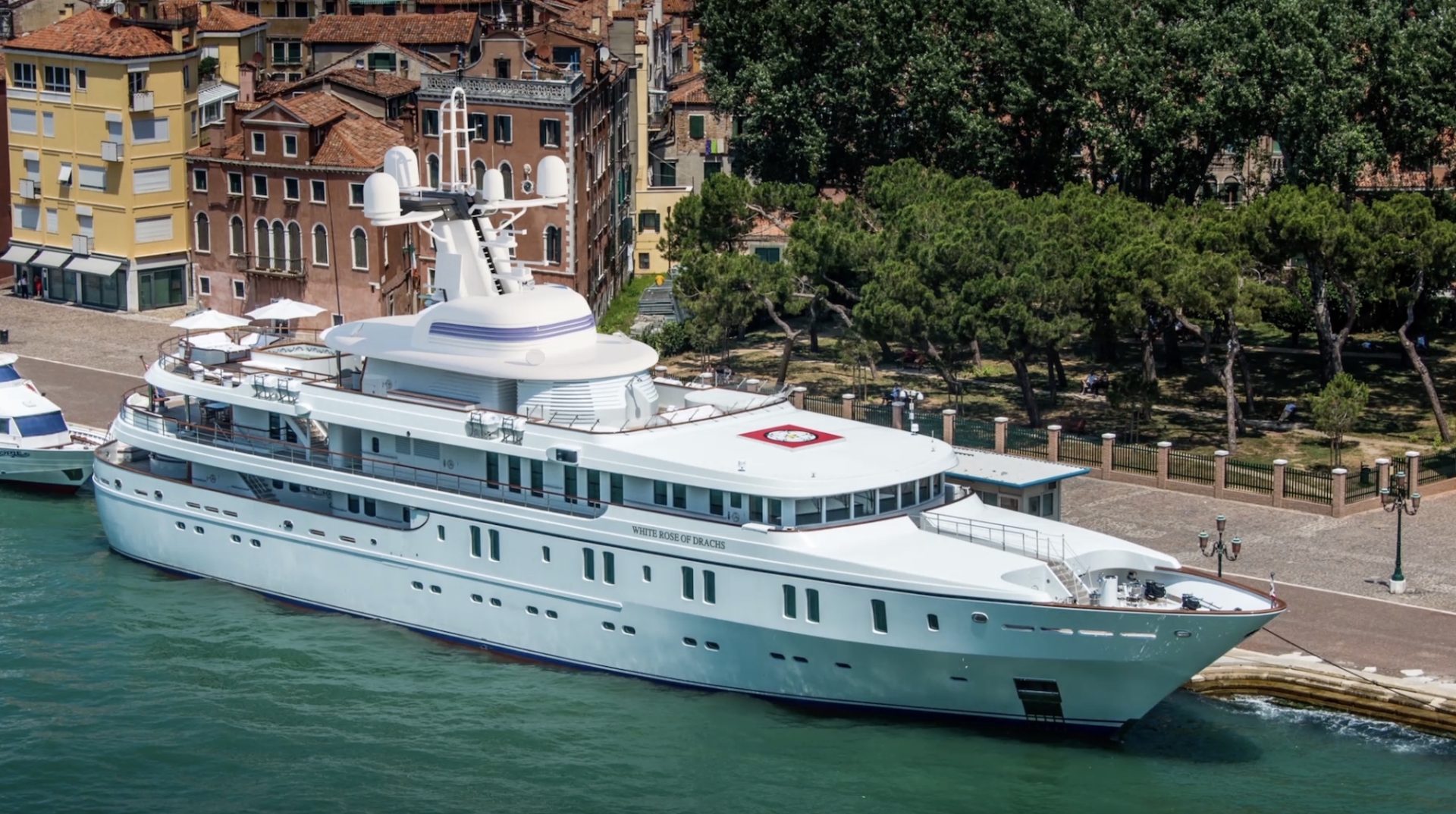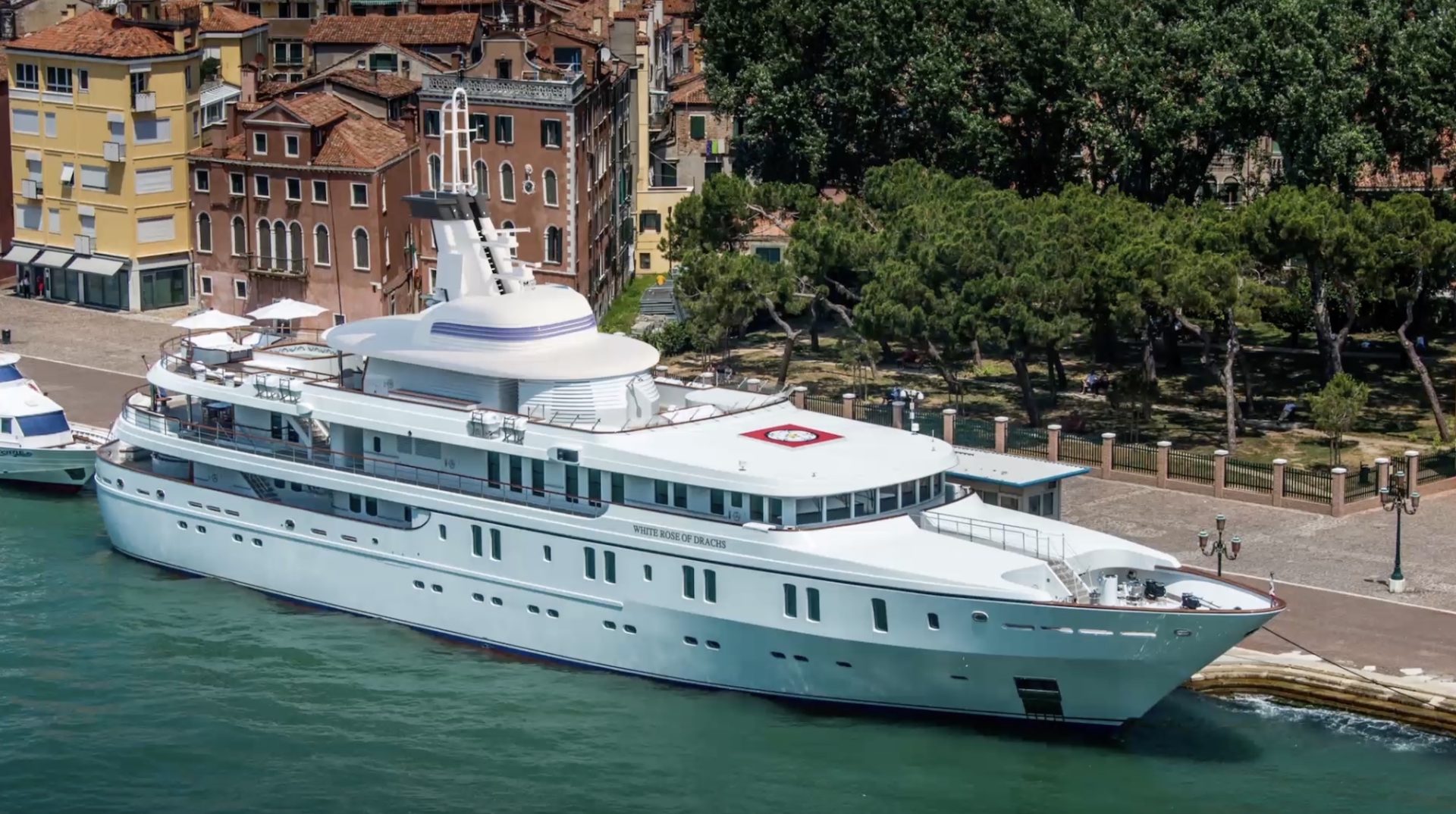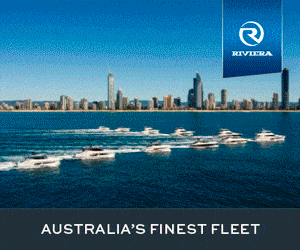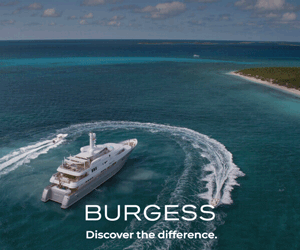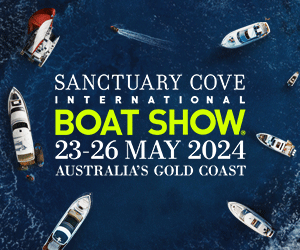Making a connection
Having taken home the ISS Awards’ Innovation gong, Kymeta’s flat-panel communications technology is making waves.
Written by Esther Barney
08 January 2018
Håkan Olsson has been with Kymeta since the US-headquartered satellite technology and services company was founded in 2012. With a background in technology including roles at Microsoft, he was brought in to develop new markets for the company’s portable, flat-panel antenna terminal which is proving to be a market disrupter for a range of sectors including the marine market.
Ocean sat down with Olsson, who is now Vice President of Kymeta’s Maritime Division, to learn more about what makes the company’s technology unique and how the realms of marine communications will be launching into new stratospheres in the coming years…
Ocean magazine (OM): Can you give me an outline of what it is that Kymeta’s technology does and how you came to enter the yachting market?
Håkan Olsson (HO): The company was officially founded in 2012, after the development of Kymeta’s portable satellite terminal, which was intended to be used for stationary needs. But we soon realised that this could be used for mobile terminals, entering a market that was dominated by terminals that were moved mechanically rather than with software.
By September 2013, we had connected with e3 Systems in yachting sector and were carrying out market research with the company. The results were promising; we felt there was a strong demand for our terminals but our technology was not quite ready yet. After several years of development, we first placed our mTenna terminals on board two test superyachts over several months in 2017 – sailing yacht The Maltese Falcon and motor yacht White Rose of Drachs – to carry out extensive testing, and both yachts have been thrilled with the results. We are now at a point where customers can buy the mTenna terminals for their yachts.
OM: What are the three key factors that make the mTenna different from comparative traditional dome satellites?
HO: Firstly, it is the size and bulk of the terminals. Yacht designs no longer need to be cluttered with big, clumsy domes and instead can feature our near-invisible antennas. We are also working with vinyl wrapping companies to offer solutions that would either conceal the terminals altogether by matching the superstructure, or would offer a motif to match the yacht’s insignia; so far tests with coatings of up to 80 microns have been successful in providing no signal disruption.
Secondly, the reliability. Today’s mechanically-steered antennas have multiple moving parts that tend to fail over time. Because the mTenna is software-based, it can be fixed remotely and has fewer parts that can malfunction.
Thirdly, the futureproofing aspect of the mTenna is a big advantage. There are currently 40 initiatives underway to launch low-Earth orbital (LEO) satellites, which will offer a new and improved alternative to today’s geostationary satellites (the ones currently used by yachts).
With geostationary satellites, the higher in latitude you are located, the poorer your signal, whereas the new system will reduce this issue. The mTenna is able to work from both kinds of satellite, unlike today’s mechanical domes, which need to work in multiples in order to switch between signals of the new LEO satellites passing overhead. The mTenna will be able to switch instantly through its software.
OM: What were the biggest surprises or areas of greatest learning from the tests you carried out on White Rose of Drachs and The Maltese Falcon?
HO: The main reason we wanted to do the sea trials with the two yachts was to work out what needed to be tweaked in our systems. We found three main areas of learning:
On the satellites and modems, we learned that we needed a certain size of satellite carrier to track the motion of the boat, and this was something that we didn’t predict as an issue in the commercial sense.
On the antenna itself, we found that the software beam that was formed with the satellites was much better than we had anticipated, even with one-panel solutions, sitting horizontally on top of the bridge on The Maltese Falcon. The yacht travelled from Antigua to the Mediterranean via Bermuda and an Atlantic crossing without any loss of connection with the single panel, which we didn’t expect to happen. Under sail, the yacht was heeling from 15 to 20 degrees, leaning away from the satellite, but it still did not have issues connecting, so the performance was a lot better than we expected. It was a fun and rewarding moment when the chief engineer of The Maltese Falcon, having made landfall in Palma de Mallorca after the transatlantic voyage, ran off the boat to give the e3 team a hug; it was the first full crossing he had experienced without any loss of connectivity.
Lastly, there is a proprietary cable connecting the outer antenna to the bridge, delivering power and data to the panel. We found issues with its durability during the testing period, so we have since carried out two rounds of development on the cable to improve it, and the issues are now fixed.
I would say our greatest key learning point of the exercise was that a single antenna is suitable for yacht solutions rather than needing multiple units. This has changed how we are marketing the panels, so e3 Systems is now marketing this to yachts rather than the multi-antenna solutions we previously believed would be necessary.
OM: In which situations would multi-panel solutions be needed?
HO: Traditional services from geostationary satellites are stronger the closer you are to the Equator. So to get good connectivity in the higher latitudes, a multi-panel solution is needed. We expect that globally roaming superyachts will have at least four panels mounted at a 30-to-45-degree angle, spread out 90 degrees apart, to give maximum reception. We are building a “combiner and arbitrator” to intensify the signal strength and switch between panels instantly to avoid any service disruption. This is expected to be available in the second half of 2018, while the single-panel solutions are already available now.
OM: Are your antennas mostly suited to superyacht-level clients or do you plan to offer solutions for owner-operated yachts?
HO: When it comes to the size of the Kymeta systems and pricing, we are undertaking a “crawl-walk-run” approach.
The “crawl” phase is focused on low volume/less price-sensitive markets, such as superyachts. In next two to three years we plan to have more terminals deployed on buses, trains and some aero markets; this will be our “walk” phase. The “run” phase will be supplying units at a higher volume, which is where we will see mass adoption, even down to 30-foot boats that are out of reach from the coastal data signal.
OM: What specific considerations have you made to ensure that the Kymeta terminal solution will work for the marine market?
HO: There are certainly specific requirements in the marine environment that need to be taken into account, such as the salt, fog and temp exposures. We have observed the fishing fleets in Alaska having corrosion issues with mechanically steered-solution, which are not an issue with flat panels. Although we did experienced corrosion of the amplifier components on the sea trial crossing, we have since adapted these parts so it is no longer a concern.
OM: Kymeta says that KĀLO is redefining how satellite services are purchased. How so?
HO: KĀLO is the Kymeta-branded IntelsatOne solution which currently provides satellite coverage for transatlantic crossings as well as the US coastal waters, the Caribbean, South America, the Middle East and across Europe.
What makes KĀLO different from other solutions on the market is that it is marketed as a gigabyte/month package as opposed to committed information rate – or CIR – service, which is how most yachts buy their satellite services today. With a CIR service, yachts are guaranteed a certain throughput, for example 4MB down and 1MB up for around US$10,000 per month (the fastest and most expensive CIR service we know of has been 50MB down and 20MB up, costing around a quarter of a million dollars a month). But there is a limited market that can afford this kind of service.
We have taken a different approach to charges, which will deliver data to the mass market with a more affordable solution. Currently, each KĀLO terminal sold to a yacht comes with a 40GB/month service for 12 months, with an expected throughput of up to 4MB down/1MB up (though this will vary depending on the volume of terminals sharing the signal).
With our yachting sales partner e3 Systems, the terminal plus one-year service retails at US$63,000. By comparison, a one-metre, mechanically-steered antenna will usually set you back in the region of US$40,000-50,000, with an additional service cost of up to US$10,000 per month for the connectivity.
One consideration is that some yacht owners will not be happy sharing a network’s signal with others, so we are working with e3 Systems to provide additional optional services that will scale up to guarantee a certain higher throughput at key times – such as when the owner or charterers are on board – to complement the standard KĀLO service as a year-round foundation for the crew. This solution would make CIR services more affordable by only scaling up when the need is there.
OM: These terminals and services would likely still be out of reach for many yacht owners’ budgets, though. Do you have plans to offer a more affordable solution in the future?
HO: When we get to the “run” phase of our development, we will be able to offer much more affordable solutions. I like to draw comparisons with the cost of televisions and how they have become less bulky and more affordable over the years. The tube televisions that were popular in the 90s were huge and very expensive. Now you have flatscreen televisions on the market that are almost invisible and are affordable on a much wider scale. We expect a similar trend for our flatscreen terminals.
OM: Which areas are still proving the most challenging to you for achieving high-speed connectivity?
HO: Expectations of clients comparing the speeds they can achieve at home compared to on board remains an area of focus for us.
When a yacht receives internet services at sea, it is essentially the result of a triangulation between the antennas, the satellites and the iDirect modems installed on board. If the modems are limited to a certain throughput, then it can make the connection feel slow, even if the antennas and satellites are able to perform at a faster rate. The current limit of the iDirect X7 premium modem is roughly 60MB/s down, whereas many clients will be used to using a connection of several 100MB/s modems in their homes.
We have been working with IntelSat and iDirect to make sure we get to a point where we can deliver the top speeds that the antenna can handle. We need to be developing all our systems in tandem. The ultimate goal is to provide a seamless service that can meet our clients’ high expectations.


